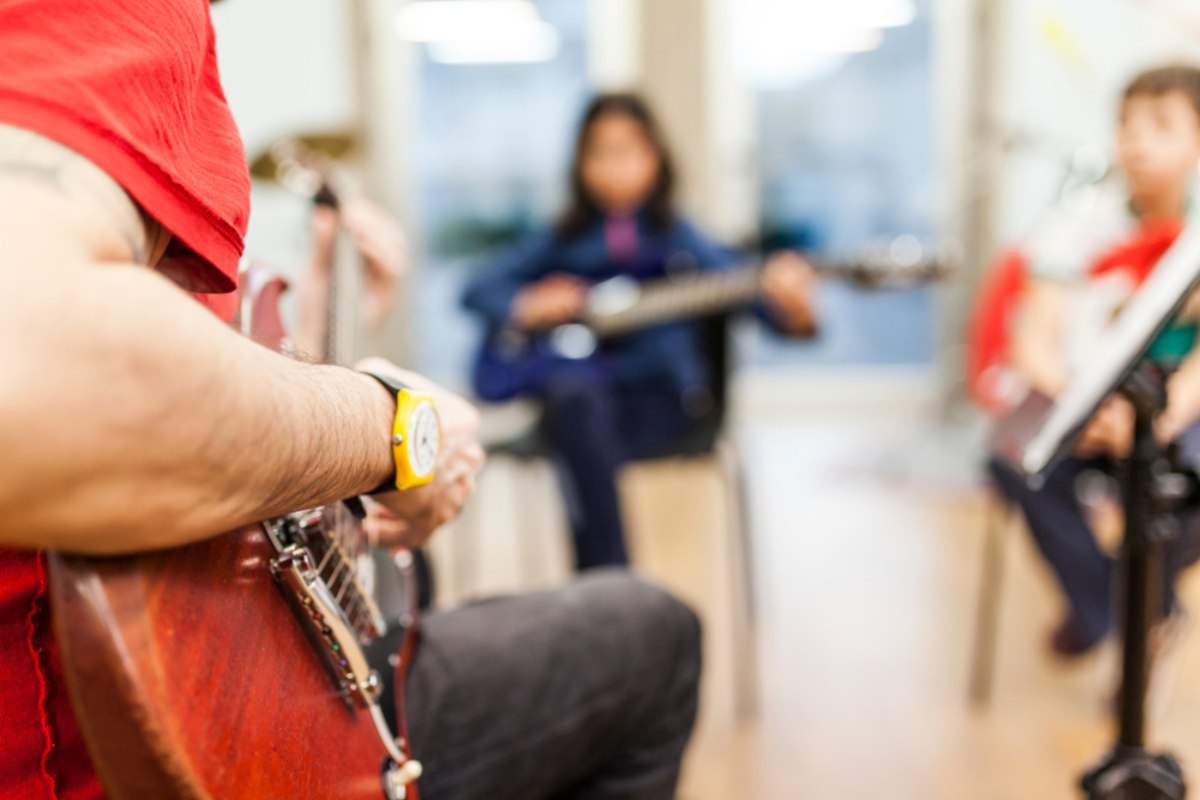For those of you who are a little short on time, I’ll get straight to the answer… technically, an electric guitar does not need an amplifier to be played. However, to get the most out of your playing and the guitar, you will at some point need to buy one.
Intrigued? Let’s find out more…
I have spent countless hours playing, practicing, and noodling on unamplified electric guitars. In fact, for a large percentage of my teaching career, I taught with an unamplified electric guitar to pupils whose guitars were also unamplified. Sometimes there was a technical reason for this, such as I was teaching in a pupil's home and they only had one amplifier, with only one channel/input. However, quite often, if there was no need to ‘create a sound’ we would happily have fun lessons using two electric guitars that were plugged into nothing.
Any decent electric guitar makes a lot more sound than people expect when unamplified, enough to easily hear what is being played. It’s obviously a lot quieter than an acoustic guitar, but still loud enough to get the enjoyment out of playing.
But, if you want to get the most out of playing the guitar, you’ll need to buy an amp (or an alternative, which I will discuss soon). You can start with a simple practice amp, 5 or 10 watts is more than enough for bedroom playing, and if it has a gain control to add a bit of distortion, all the better.
What practice amp should I buy?
In my opinion, it’s well worth sticking with the usual suspects in terms of brands, Marshall, Fender, Vox, Peavey, etc. all make excellent, relatively affordable practice amps. If your budget can’t quite stretch to that, buy a second-hand one from a second-hand guitar shop, Facebook Marketplace, Craiglist, etc.
As long as you are sticking with one of the reputable brands, such as those mentioned above, you should have no issues with a secondhand purchase. Many people start learning the guitar and quickly give up for many reasons, so there is always an active market in excellent condition, hardly used practice amps that can be snapped up for a lot less than the new price.
Alternatives to a Guitar Amp
Don’t want or can’t afford an amp yet? Maybe someone else in your household doesn’t want a noisy amplifier disturbing them? Or maybe you just have troublesome neighbors who complain about every noise you make? If so, no worries, there are lots of alternatives.
Headphone Amps
These are tiny amplifiers that plug directly into the output jack of your guitar. That means that you can actually walk around with them connected because they are battery powered. Vox, Fender, etc. all make them and they are designed to look and sound like some of the company's classic amps. But don’t get too excited, they sound good enough, but you won’t get the exact sound of a vintage Vox AC30 or Fender Deluxe out of them.
Simply plug your headphones directly into them and turn them up while the outside world hears nothing.
They are also very affordable and unlike some things you buy as a beginner, can be used, even when you own your very own Marshall stack, for quiet practice, or while traveling.
Mini-amps
This brings me nicely on to the Marshall Mini Stack, which is a similar idea, but this time you strap it onto your belt. Unlike the headphone amps above, it also has a very small speaker, so you can rock out at a low volume if you have the chance.
It also runs on batteries so you can run around and pretend you're on stage at Madison Square Garden if you like. And best of all it looks exactly like the Marshall stack of most guitarist's dreams, only in miniature!
Multi-effects Units
Guitarists love effects, especially if you’re into more effect-driven genres such as post-rock, shoegaze, ambient, etc. So, you’re going to need to get yourself a few over time, maybe a reverb if your amp doesn’t have it built-in, or a good overdrive/distortion/fuzz pedal, and a delay, or chorus/flanger/phaser.
Or maybe you want an all-in-one processor that handles all those effects and more? If so, there is a good chance that it will have an amp simulator built in and a headphone output.
You can then practice at home without disturbing anyone while getting the exact tones you want.
The downside compared to using an amp is that you have to wear headphones which doesn’t have the same feel as playing and listening to a real amp. But if circumstances dictate, then it’s a good option. Plus, when you do get an amp in the future, you can plug it into that for a lot more noise!
Playing through your hi-fi or surround sound system
I have heard countless stories about frustrated electric guitarists plugging their cable into the microphone input of a hi-fi or surround sound system.
Don’t!
Not only will it produce a weak, unclear, and noisy (in a bad way) sound, but there is a chance that you can damage the system. Without overcomplicating things, there is a difference of impedance between microphone level and electric guitar output level, so use the input for microphones, not guitars or anything else.
However, it is possible to plug directly into an auxiliary input if your system has one (usually on the back of the unit). You will need to buy the appropriate cable (usually a ¼ inch jack into a pair of phono connectors). But, being perfectly honest, this is the worst option covered in terms of sound quality. Hi-fi amps are designed in a completely different way to guitar amps and you probably won’t be very happy with the sound you get, so go for any of the other options I have listed if possible. Plus, don’t try this if you have computer speakers, it will sound even worse and could damage the speakers.
If you have a multi-effects unit, amp simulator, or amp modeler, you will probably be able to plug it into one of the inputs on the back of your Hi-fi amp or surround system. You will need to check what connections are used and buy the correct cable. The sound will be good to excellent depending on your unit and if it has been designed to be used in this way.
Audio Interfaces and Smartphones
The final option is to buy yourself an audio interface and then play directly into your computer, laptop, or tablet. This also opens up the world of recording, editing, and songwriting, which has to be a good thing.
However, you will need some quality computer speakers, or better still, studio monitors, to get a great sound. This makes this one of the more expensive options if you don’t already have decent speakers for your PC setup.
You can also get free and affordable DAWs for smartphones which let you plug straight in and listen to yourself play. It won’t produce a stunning guitar sound, especially in the bass frequencies, but it’s a great option for traveling.
Wrapping it Up
Good guitar amps are well worth the investment, and if you can get hold of a vintage value amp you will end up in tone heaven! Nothing beats being on stage and turning around to go to your amp to produce some delicious feedback that leaves the audience in awe!
However, we have to be realistic, not everyone has the circumstances or budget to enjoy the pleasures of a great amp, especially when they are just starting out. So, get yourself one of the options I’ve covered and enjoy the tones you love without disturbing the family or neighborhood.
If you like this article, please share it!
Be sure to join our FB Group Guyker Guitar Parts VIP Group to share your ideas! You can also have connections with like-minded guitar players, Guyker updates as well as discounts information from our FB Group.





